Mutations in MLL3 promote breast cancer progression via HIF1α-dependent intratumoral recruitment and differentiation of regulatory T cells
- PMID: 40749665
- PMCID: PMC12344594
- DOI: 10.1016/j.immuni.2025.07.008
Mutations in MLL3 promote breast cancer progression via HIF1α-dependent intratumoral recruitment and differentiation of regulatory T cells
Abstract
Loss-of-function mutations in MLL3, encoding the histone methyltransferase MLL3/KMT2C, are frequent in various cancer types. To examine the mechanisms whereby MLL3 suppresses tumorigenesis, we developed a mouse mammary-stem-cell-based tumor model bearing cancer-driver mutations, including loss of MLL3/KMT2C and p53 and constitutive phosphatidylinositol 3-kinase (PI3K) activation, recapitulating a genetic makeup of aggressive human breast cancers. MLL3 loss stabilized the transcription factor HIF1α, which increased secretion of the chemokine CCL2 by tumor cells and promoted recruitment of CCR2+ regulatory T (Treg) cells. Treg cell depletion slowed tumor onset and progression. In human breast tumors, infiltration of Treg cells correlated with the presence of MLL3 mutations. HIF1α enforced BLIMP-1-dependent differentiation of tumor-infiltrating Treg cells into ICOShiGITRhi effectors that secreted the immunosuppressive cytokines transforming growth factor β (TGF-β) and interleukin-10 (IL-10). Antibody targeting of ICOS or GITR depleted tumor Treg cells and inhibited tumorigenesis. Thus, MLL3 mutations shape an immunosuppressive tumor immune microenvironment in aggressive breast cancers and likely in other cancers where functional MLL3 is lost.
Keywords: CCL2; CCR2(+) Treg cells; CRISPR; HIF1a; ICOS and GITR; IL-10; KMT2C-MLL3/p53/PI3 kinase tumor driver mutations; TGF-β; effector BLIMP-1(+) ICOS(high)/GITR(high) Foxp3(+) regulatory T cells in tumors; immune checkpoint blockade therapy; preclinical murine mammary-stem-cell-based breast tumor.
Copyright © 2025 Elsevier Inc. All rights reserved.
Conflict of interest statement
Declaration of interests The authors declare no competing interests.
Figures

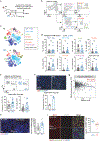
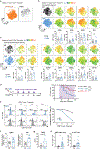

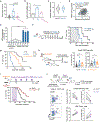
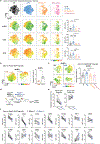
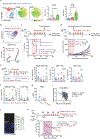
References
MeSH terms
Substances
Grants and funding
LinkOut - more resources
Full Text Sources
Medical
Molecular Biology Databases
Research Materials
Miscellaneous

